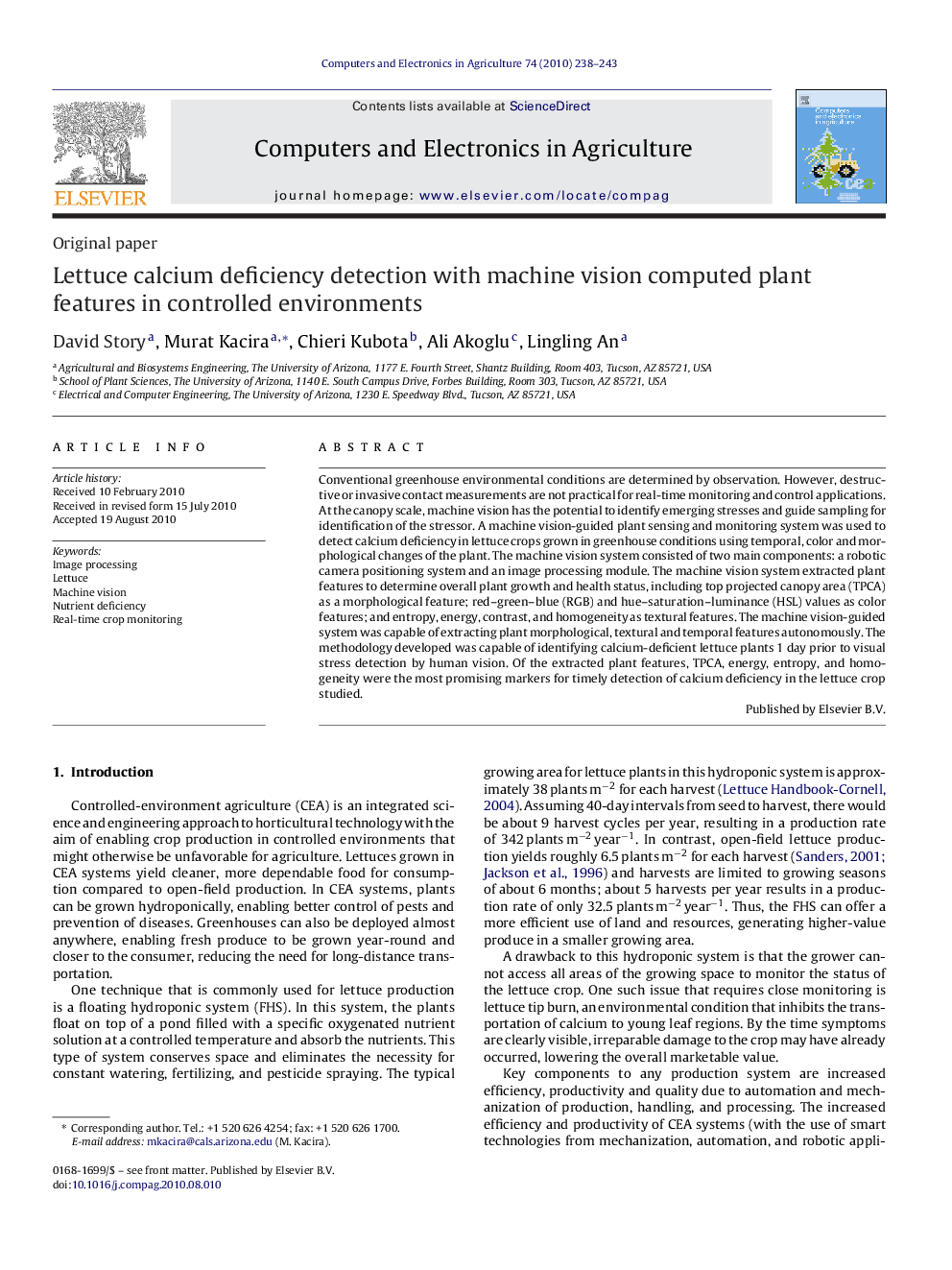| Article ID | Journal | Published Year | Pages | File Type |
|---|---|---|---|---|
| 85363 | Computers and Electronics in Agriculture | 2010 | 6 Pages |
Conventional greenhouse environmental conditions are determined by observation. However, destructive or invasive contact measurements are not practical for real-time monitoring and control applications. At the canopy scale, machine vision has the potential to identify emerging stresses and guide sampling for identification of the stressor. A machine vision-guided plant sensing and monitoring system was used to detect calcium deficiency in lettuce crops grown in greenhouse conditions using temporal, color and morphological changes of the plant. The machine vision system consisted of two main components: a robotic camera positioning system and an image processing module. The machine vision system extracted plant features to determine overall plant growth and health status, including top projected canopy area (TPCA) as a morphological feature; red–green–blue (RGB) and hue–saturation–luminance (HSL) values as color features; and entropy, energy, contrast, and homogeneity as textural features. The machine vision-guided system was capable of extracting plant morphological, textural and temporal features autonomously. The methodology developed was capable of identifying calcium-deficient lettuce plants 1 day prior to visual stress detection by human vision. Of the extracted plant features, TPCA, energy, entropy, and homogeneity were the most promising markers for timely detection of calcium deficiency in the lettuce crop studied.
Research highlights▶ Autonomous machine vision system for real-time monitoring of lettuce plant health and growth in controlled-environment plant-production systems has been developed. ▶ Top projected canopy area, energy, entropy, and homogeneity textural parameters were the most promising markers for timely detection of calcium deficiency in the lettuce crop studied. ▶ The developed methodology identified calcium-deficient lettuce plants 1 day earlier than the visual stress detection by human vision.
